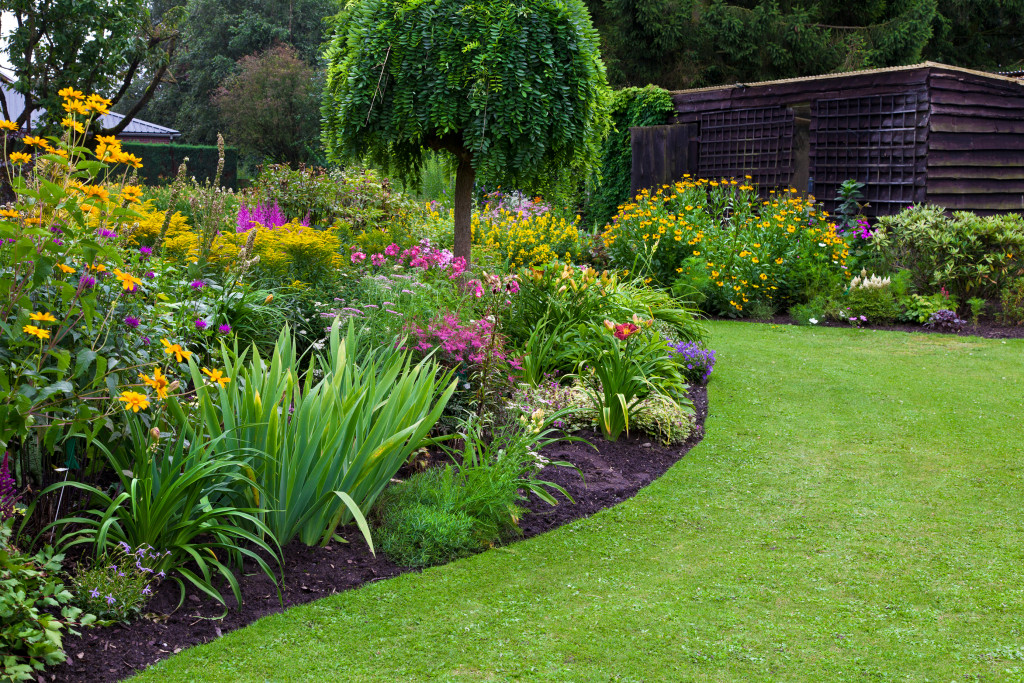- Regular maintenance, including appropriate watering and pruning, is essential for the health and vibrancy of your garden.
- The soil in your garden should be nutrient-rich and regularly tested to ensure it meets the needs of your plants.
- Sustainable pest management strategies should be used to keep pests in check without harming the environment or beneficial garden creatures.
- A diverse array of plants contributes to a balanced ecosystem and continual visual interest.
- Adjust your gardening practices with the changing seasons to keep your garden thriving year-round.
As an enthusiast of green spaces, having a verdant garden in your backyard can transform your home into a personal sanctuary. Cultivating a lush, healthy garden is not merely about aesthetic appeal; it’s a testament to your dedication and love for nature. Delve into some top-notch tips to help you maintain the vibrancy of your backyard garden and keep it blooming all year round.
Regular Maintenance
Regularly maintaining your backyard garden is an essential practice that ensures the continued health and beauty of your plants and flowers. Here are some tips:
Regular Watering

Watering your garden is not as simple as it might seem; it requires understanding each plant’s needs and a commitment to consistent care. A critical aspect of this is investing in a high-quality watering system for your garden. Such a system can be calibrated to the needs of your specific plants, ensuring they receive the right amount of water at the right time.
This can prevent overwatering or underwatering, leading to plant stress and disease. A well-chosen system can promote water conservation, delivering only where and when needed. In essence, a high-quality watering system is not just an investment in the health and vibrancy of your garden, but also in the sustainability of your gardening practices.
Proper Pruning
Pruning plays a significant role in maintaining the health and aesthetics of your garden. By removing dead or overgrown branches and stems, you can stimulate the growth of new flowers and leaves, enhancing your garden’s overall appearance and vibrancy. Additionally, pruning helps to control pests and diseases that might harm your plants, ensuring their longevity and vitality.
It can also shape your plants in size and form, contributing to your garden’s overall design and aesthetic. However, it is crucial to prune at the right time and in the right way for each specific plant, as improper pruning can cause damage. So, invest in quality pruning tools, and educate yourself about the specific pruning needs of each plant in your garden. Proper pruning is a combination of art and science that can bring out the best in your garden.
Nutrient-Rich Soil

Like humans, plants also need a balanced diet to grow strong and healthy. Soil enriched with essential nutrients fosters the growth of plants and increases their resistance to pests and diseases. It’s not just about using fertilizers; it’s more about understanding the unique nutrient needs of your plants and providing the right blend of organic matter and minerals.
Regular soil testing can provide valuable insight into your soil’s nutrient content and pH level, helping you to tailor your soil enrichment practices accordingly. A good practice is to incorporate compost into your soil regularly. Compost enhances nutrient content and improves soil structure, promoting better water retention and root growth. Nutrient-rich soil is the foundation of a vibrant and robust garden. Remember, healthy soil equals healthy plants.
Pest Management
Effective pest management is vital to maintaining a flourishing garden. Pests, such as insects or weeds, can invade your garden, causing damage and hindering the growth of your plants. However, managing pests in a way that doesn’t harm the environment or beneficial garden creatures is essential. Instead of using chemical pesticides, consider natural methods like introducing beneficial insects and natural predators to harmful pests.
Using plant varieties resistant to pests, practicing crop rotation, and maintaining healthy soil can deter pests. Regularly inspect your garden for early signs of infestation, as early detection can make pest management much more manageable. These sustainable pest management strategies can help ensure your garden remains vibrant and healthy while respecting the surrounding ecosystem.
Plant Diversity
Incorporating a diverse array of plants in your garden can create a stunning visual impact while also helping to maintain a balanced ecosystem. Different types of plants attract various beneficial insects and birds, promoting biodiversity and enhancing the overall health of your garden. From a visual standpoint, diversity in plant types, sizes, and colors can create a dynamic and interesting landscape, offering something new to discover in every corner of your garden.
Furthermore, choosing plants with different blooming seasons ensures your garden remains vibrant throughout the year. However, selecting plants well-suited to your local climate and soil conditions is important, ensuring their survival and growth. Plant diversity is a key aspect of a vibrant and healthy garden, contributing to its aesthetic appeal and ecological balance.
Seasonal Adjustments
As the seasons shift, so should your gardening practices. Spring is a time of growth and renewal; use it to plant new flowers and shrubs, and to fertilize your soil. In the heat of summer, ensure your garden is adequately watered and protected from extreme heat. Come fall, it’s time to prune back your plants and prepare for winter.
Winter might seem like a rest period, but it’s an important time for planning and prepping for the year ahead. Remember that each plant may have specific seasonal needs, so it’s important to understand these and adjust your care practices accordingly. Essentially, making seasonal adjustments is like tuning your garden to the rhythm of nature, ensuring it thrives year-round.
In conclusion, maintaining a vibrant garden requires diligence, knowledge, and love for nature. Remember, your backyard is an extension of your home, and a thriving garden can transform it into a personal oasis. So, roll up your sleeves, be mindful of these tips, and take the first step in making your garden a year-round spectacle!

